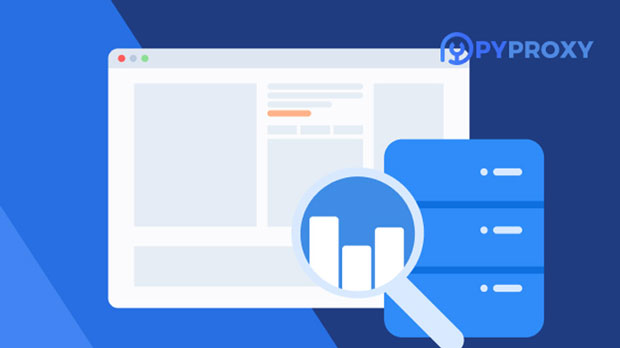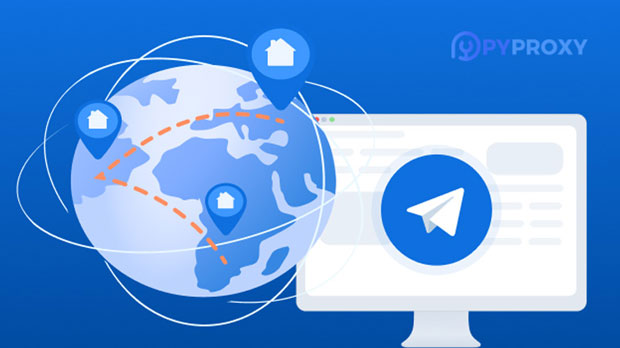When it comes to online privacy and data protection, using proxies is a common practice. Among various proxy types, static residential proxies are often seen as the most reliable for secure, anonymous browsing. Two of the most talked-about proxy services in this category are PYPROXY and Blockaway Proxy. Both offer different features, security protocols, and levels of reliability. However, understanding the specific advantages and disadvantages of these proxies is essential for users looking to make an informed choice. This article will explore the security features, performance, and overall reliability of Pyproxy and Blockaway Proxy to determine which one stands out in terms of providing safe and efficient residential proxy services. Understanding static residential proxiesBefore diving into the specifics of Pyproxy and Blockaway Proxy, it’s crucial to understand the concept of static residential proxies. A static residential proxy is essentially a residential IP address that is assigned to the user for an extended period. Unlike dynamic residential proxies, where the IP address changes periodically, static residential proxies ensure that the IP remains the same for a longer duration, providing consistency and stability.One of the key reasons why static residential proxies are preferred is their security. These proxies use IPs from real residential locations, making them less likely to be flagged or blocked by websites, as opposed to data center proxies. Static residential proxies provide anonymity and help users maintain privacy, which is particularly important when accessing restricted content or scraping websites.Pyproxy OverviewPyproxy is a popular choice among individuals and businesses for using static residential proxies. It is known for its fast connection speeds, ease of use, and robust security features. Pyproxy claims to offer one of the most reliable residential proxy services, with a focus on delivering top-tier anonymity and untraceable browsing capabilities.One of the standout features of Pyproxy is its extensive pool of IP addresses, which helps in maintaining anonymity for users. The proxy service uses high-quality, real residential IPs from different regions, making it more difficult for websites to detect and block requests. Pyproxy also offers features such as unlimited bandwidth and 24/7 customer support, making it a reliable option for users who need consistent and secure browsing.Blockaway Proxy OverviewBlockaway Proxy, on the other hand, is another competitor in the static residential proxy market. Known for its focus on security and privacy, Blockaway Proxy offers a reliable service with a wide range of IP addresses that are sourced from real residential locations. Blockaway Proxy claims to use sophisticated anti-detection mechanisms to ensure that users remain anonymous and that their activities are not traceable.Blockaway Proxy’s user interface is designed to be intuitive, and it offers a variety of configuration options to suit different use cases. It also emphasizes security, with robust encryption protocols that protect users’ data while browsing the internet. Blockaway Proxy claims to be highly effective for tasks such as web scraping, account management, and bypassing geo-restrictions.Security Features Comparison: Pyproxy vs Blockaway ProxySecurity is the most important factor when choosing a proxy service, especially for those looking to maintain anonymity while browsing or accessing sensitive data. Let’s compare the key security features of Pyproxy and Blockaway Proxy to determine which service offers superior protection.Encryption Both Pyproxy and Blockaway Proxy use advanced encryption protocols to secure user data. This ensures that all information transmitted through the proxy is encrypted, preventing unauthorized access. However, Pyproxy uses AES-256 encryption, which is widely regarded as one of the most secure encryption standards available. Blockaway Proxy, on the other hand, uses SSL encryption, which is also secure but not as advanced as AES-256. In terms of encryption strength, Pyproxy has a slight edge.Anti-Detection Technology Both proxy services employ anti-detection mechanisms to avoid detection by websites. Pyproxy’s system is designed to rotate IP addresses automatically to avoid detection, while Blockaway Proxy uses stealth technology to mask traffic and reduce the risk of being flagged. Although both services offer anti-detection tools, Blockaway Proxy’s system is more advanced in terms of stealth and masking traffic, making it a more secure option for users focused on avoiding detection.IP Pool Size and Diversity A large and diverse pool of IP addresses is critical for avoiding blocks and maintaining anonymity. Pyproxy offers a wide range of IPs from various regions, but Blockaway Proxy takes it a step further by providing more granular control over IP selection. Blockaway Proxy allows users to select specific regions or even cities from which they want to route traffic, offering greater flexibility for users with precise location requirements. In terms of IP pool size and diversity, Blockaway Proxy takes the lead.Performance and Speed: Pyproxy vs Blockaway ProxyWhile security is crucial, performance is equally important when choosing a proxy service. A slow proxy can lead to delayed browsing, timeouts, and poor user experience. Both Pyproxy and Blockaway Proxy boast fast connection speeds, but there are differences in performance.Pyproxy Pyproxy’s infrastructure is optimized for speed, offering users fast and stable connections. It guarantees low latency and high throughput, making it suitable for activities such as web scraping, online gaming, and accessing geo-restricted content. However, during peak times, some users report slightly slower speeds, as the shared nature of the proxy pool can cause congestion.Blockaway Proxy Blockaway Proxy provides fast speeds and is known for its stable connections even during high-demand periods. Blockaway’s use of an extensive and well-maintained IP pool allows for minimal congestion, which translates into consistently good performance. It’s ideal for users who need reliable, fast proxies for data scraping, browsing, or managing multiple accounts.Overall, both proxies offer good performance, but Blockaway Proxy has an edge in terms of consistent speed and minimal congestion.Pricing and PlansThe cost of using a static residential proxy service can vary depending on the provider, the number of IP addresses required, and the level of service needed. Both Pyproxy and Blockaway Proxy offer flexible pricing plans, allowing users to choose the plan that best fits their needs.Pyproxy Pricing Pyproxy’s pricing is based on the number of IPs and the level of service required. The pricing is competitive, but it tends to be on the higher side due to the premium service offered. Pyproxy offers various tiers of service, depending on the user’s needs, such as dedicated proxies or shared proxies.Blockaway Proxy Pricing Blockaway Proxy is relatively more affordable compared to Pyproxy, especially for users who require fewer IPs. It offers a variety of pricing plans, including pay-as-you-go and subscription models, making it accessible for different users. Although the pricing is lower, the quality of service remains high, making it a good value option for budget-conscious users.Conclusion: Pyproxy vs Blockaway Proxy - Which One is More Reliable?In the debate between Pyproxy and Blockaway Proxy, both services offer reliable static residential proxy solutions, each with its strengths. Pyproxy excels in encryption strength and connection speed, while Blockaway Proxy stands out in terms of stealth technology, IP pool diversity, and overall performance consistency. If security is your top priority, Pyproxy may be the better choice due to its superior encryption protocols. However, for users looking for a more flexible and cost-effective option with excellent overall performance, Blockaway Proxy might be the more reliable choice.Ultimately, the decision comes down to your specific needs—whether you prioritize cutting-edge encryption or the ability to manage a larger variety of IPs across different regions. Either way, both Pyproxy and Blockaway Proxy provide solid, secure, and reliable solutions for anyone looking to enhance their online privacy and security.
Sep 02, 2025



































































